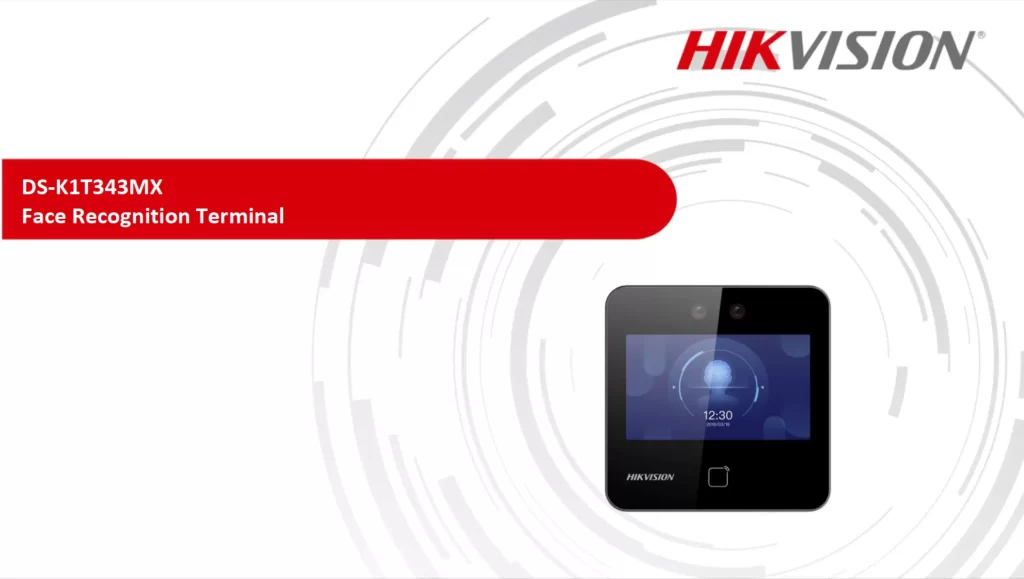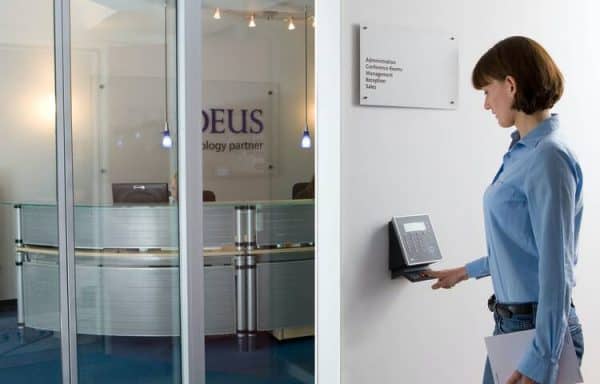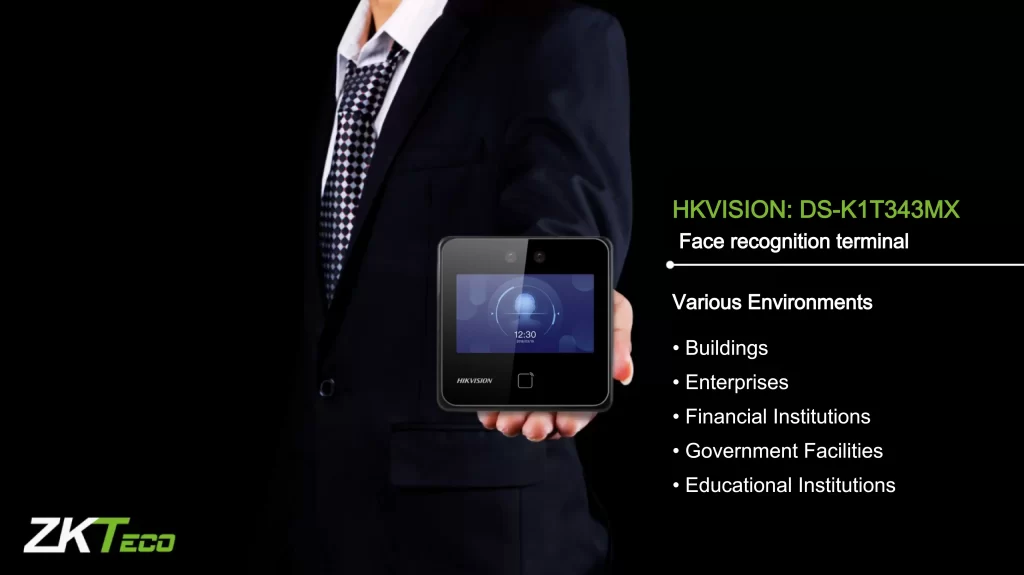
Step into the future with the HKVISION DS-K1T343MX Biometric Access Control System, a cutting-edge solution that revolutionizes security. This state-of-the-art system combines advanced biometric technology with seamless integration, ensuring efficient and secure access control for any organization.
With its sleek design and innovative features, the DS-K1T343MX sets a new standard for Facial Recognition Access Control. Say goodbye to traditional keycards and PIN numbers – this system utilizes fingerprint recognition to grant access. This not only eliminates the risk of lost or stolen credentials but also provides a higher level of security, as fingerprints are unique to each person.
How the biometric access control system works
The HKVISION DS-K1T343MX Biometric Access Control System operates through a sophisticated mechanism that primarily relies on biometric technology, specifically facial recognition rather than fingerprint recognition, enhancing the security by capturing unique biometric data from an individual’s face and converting it into a digital format that can be securely stored and compared against future access attempts.
This process occurs in mere seconds, allowing for a quick and efficient access control experience. Once the fingerprint is scanned, the system checks the captured biometric data against the previously stored templates in its database. If a match is found, access is granted; if not, the system denies entry. This instantaneous verification process significantly reduces the time taken for authentication, making it ideal for high-traffic areas.

Benefits of the HKVISION DS-K1T343MX
- Convenience for Users and Administrators
- Eliminates the need for multiple access cards or complex passwords.
- Users can gain access by simply scanning their fingerprints.
- Streamlines the entry process, reducing time spent at access points.
- Simplified Access Control Management
- Easy enrollment and removal of users for administrators.
- Quick updates to access permissions in response to changes (e.g., employee turnover or role changes).
- Reduces the hassle of reissuing physical access cards.
- Contribution to Operational Efficiency
- Generates detailed access logs for monitoring who accessed specific areas and at what times.
- Provides invaluable data for auditing purposes and identifying patterns or potential security breaches.
- Integration Capabilities
- Works seamlessly with other security technologies.
- Enhances overall security management by centralizing access control with a biometric solution.
- Improves defenses against potential threats by streamlining security protocols.
Understanding Facial Recognition Access Control
Understanding Facial Recognition Technology is a journey that begins with grasping the underlying principles of how Facial Recognition works. This technology, which is widely used in access control systems, operates on a few fundamental processes that ensure its effectiveness and reliability.
How Facial Recognition Works
How Facial Recognition Works involves a two-step process — face detection and analysis, followed by face mapping.
Face Detection and Analysis
Face Detection and Analysis is the first step in Facial Recognition Access Control technology. During this phase, the system identifies human faces within a digital image or video frame. The technology uses differentiating features, such as the eyes, nose, mouth, and the distance between these features, to distinguish a face. Post detection, the system conducts an intricate analysis of the facial features and creates a facial signature based on unique characteristics.
While this aspect of Facial Recognition Access Control is complex, understanding it helps to elaborate how these systems ensure only authorized individuals gain access in access control mechanisms.
Technology Behind Face Mapping
The Technology Behind Face Mapping continuously evolves to optimize the accuracy of facial recognition systems. In face mapping, the detected face is transformed into a mathematical representation, generating what is referred to as a faceprint. This faceprint, akin to a fingerprint, is unique for each individual, thus reducing the chances of inaccurate identification.
Visualizing the face as a complex three-dimensional structure, the technology maps out distinct features such as the contours of the eyes, nose, and mouth, and records the relative distances between these features. This comprehensive data provides sufficient information for the system to recognize a face reliably.
Key Components of the Facial Recognition Access Control
Understanding the Key Components of Facial Recognition Systems is crucial to comprehend how these systems function effectively as access control tools. The technology consists primarily of software algorithms and specific hardware requirements.
Software Algorithms
Software Algorithms form the core of facial recognition systems. These mathematical models scrutinize and process the data procured during face detection and analysis. The more refined the algorithm, the more accurate the facial recognition. Over time, software developers have sought to improve these algorithms, reducing error rates and increasing their ability to differentiate even the slightest variations among faces.
Hardware Requirements
In tandem with the software, Hardware Requirements also play a vital role in ensuring the efficiency of facial recognition systems. This hardware includes high-resolution cameras and advanced infrared sensors that capture detailed facial images even in varying light conditions. Strong processing capabilities are also a requirement to analyze and match facial data in real time.
With a deep understanding of facial recognition technology’s fundamentals and its key components, you are better equipped to appreciate its use in access control systems. Real-world applications of this technology can range from mundane tasks such as unlocking a smartphone to providing enhanced security in a high-risk environment.
Deploying the Facial Recognition Access Control Device
To ensure a successful deployment of the HKVISION DS-K1T343MX Biometric Access Control System, several best practices should be followed. First and foremost, conducting a thorough needs assessment is crucial. Organizations should evaluate their specific security requirements, access control policies, and existing infrastructure before installation. This assessment helps determine the optimal placement of biometric devices, ensuring they are installed in high-traffic areas while maintaining convenience for users.
Understanding the unique needs of the organization will guide the deployment process and enhance the effectiveness of the system. Another essential practice is to engage in comprehensive user training. Providing training sessions for employees on how to use the biometric system effectively will alleviate concerns and resistance to change.

